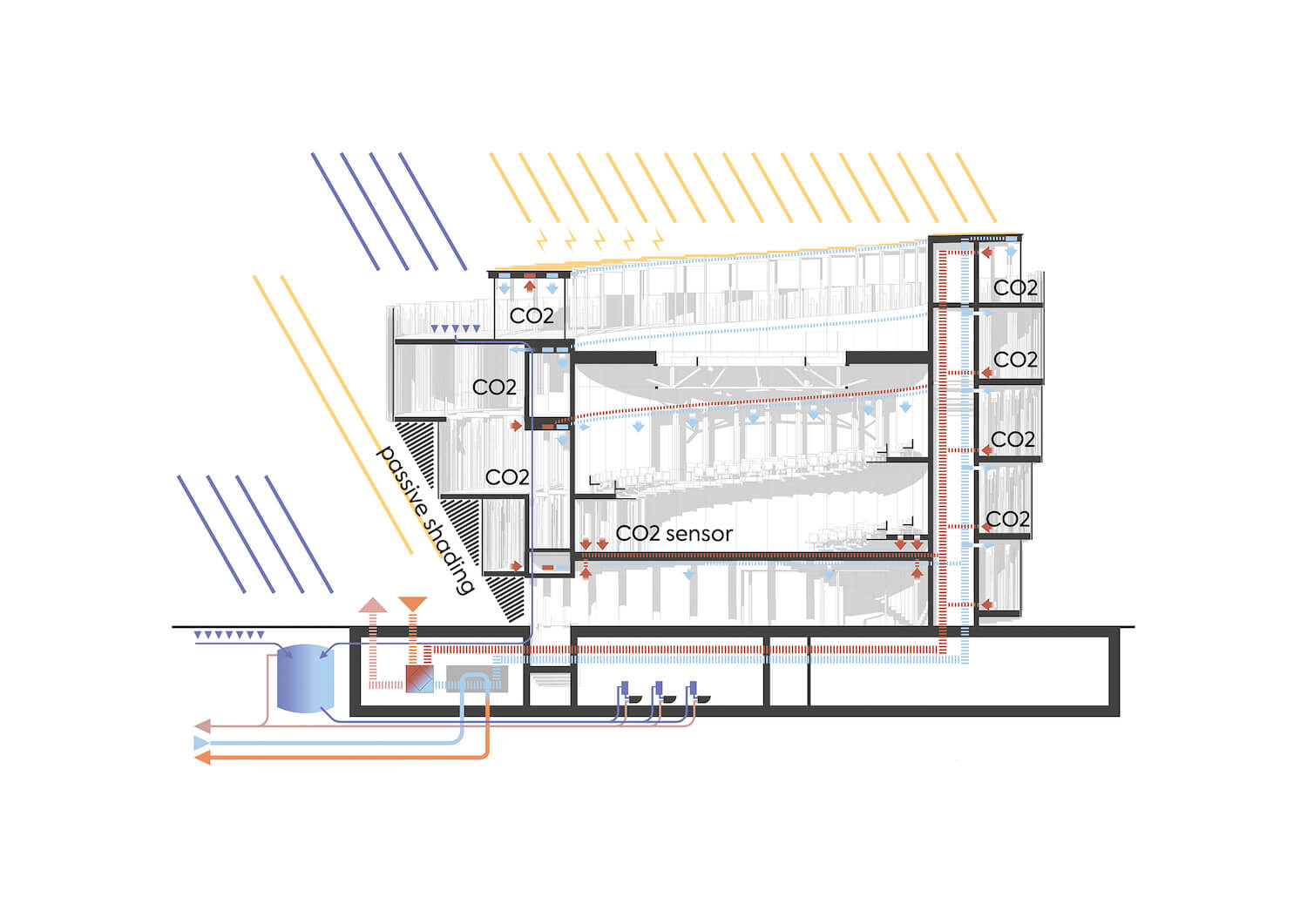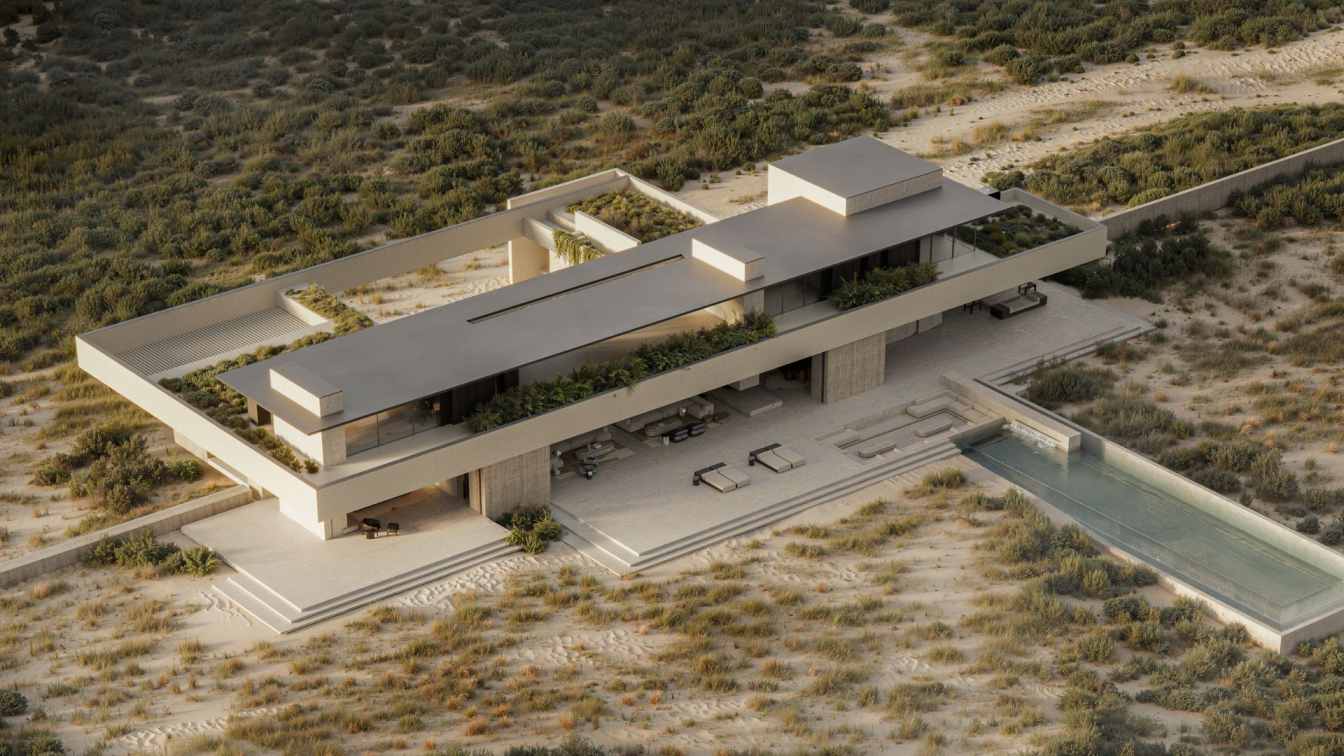Apropos Architects: The architecture of the Czech pavilion for the World Expo 2025 in Osaka, Japan, is a sophisticated instrument for achieving a higher form of viability. The dynamic spiral movement upwards is an allegory of the ideal life path. The sculpted form of the pavilion makes movement an essential tool for maintaining physical vitality.
The pavilion explicitly encourages the visitor to engage in some form of physical exercise, while the content compels creative engagement with spiritual and cultural values. The concept of the proposed architecture is the thesis of a space that is shaped by the movement of the body and soul. Through the active movement of the visitor in the interior of the pavilion, the cultural content materializes, and thus the visitor's journey is completed - achieving inner vitality.
The designed pavilion takes advantage of its exposed location at the edge of the coastal promenade and draws attention to itself in all weathers with its dominant, crafted glass facade. It recalls the rich history of glassmaking in the Czech Republic and offers unusual exhibition spaces with a changing interior atmosphere. And it shines on the outside.

The silhouette of the pavilion is significant. The frozen gesture of the trajectory of movement - the spiral - responds explicitly to the internal arrangement sculpting the external form of the house. The barrier-free spiral ramp of the exhibition space wraps around the conceptual centerpiece that is the hollow tube of the multifunctional auditorium. This, with its internal diameter of fifteen and a half metres, rises to a height of twelve metres above ground level. The exhibition ramp rises along with it, and its movement is mirrored by the ramp with seats for visitors that forms an auditorium inside the auditorium, which can be entered from several points throughout the spiral.
The spiral, wrapping around the auditorium in a logical sequence, functions as an exhibition and communication ramp serving the smooth and linear upward movement of visitors. The capacity of its exhibition space is 402 square metres and the width of the ramp varies between 1.8 and seven metres. At a height of twelve metres, the ramp gives way to a spacious viewing terrace with a restaurant and bar. The added spatial experience is not only the view of the calm sea surface, but also the view through the glass skylight down into the auditorium.

A staircase, woven into the cavity of the double walls of the cylinder, provides a way down to the ground floor of the commercial building, which is also an integral part of the exhibition, where it is also its last chapter.
The conceptual idea of the load-bearing structure is a regular framing system of CLT wooden panels, which form a continuous structure consistently adhering to the chosen concept in the form of a spiral exhibition ramp, divided into thirty-six segments within a single turn around the auditorium. Regularly divided segments ensure sufficient construction readiness, demountability and transportability.
Following the overall concept of the exhibition grounds, the primary source of energy for the pavilion is electricity. Rainwater is harvested from the paved areas, which is reused after necessary modifications. The geometry of the pavilion actively contributes to the shading of the indoor and outdoor areas, with additional shading provided by integrated screen blinds. The house is equipped with a central air conditioning unit, which is located in the utility room and connected to a central cooling source.

Materials
CLT panels – load bearing structure
acoustic CLT panels – auditorium cladding
crafted glass panels, using the fusing method + metal fixing structure – facade
concrete tiles with anti-slip coating - roof terrace flooring
Additional information
The facade is composed of insulating glass panels of double or triple glazing. The outer pane of each panel is artistically processed. The design provides for the processing of the panels using the so-called sintering method, also known as fusing. On the crystal pane of flat float glass with low iron content, cut strips of other glass will be scribed in different layers over each other to form a motive inspired by the linearly raised basalt pipes known mainly from the Kamenický Šenov area. It is assumed that for the scribed strips, it will be possible to make use of the undercut material created by formatting the underlying panes.
Due to the spatial and temporal complexity of the construction of the pavilion, the design envisages the production and preparation of the vast majority of the parts already in the Czech Republic and relatively simple assembly on site after transport to Japan. After returning back to the Czech Republic, we assume the subsequent use of the pavilion in a minimally modified form. Due to the nature of the pavilion's character, future use in the sense of museum or gallery-type exhibition spaces in the place of its origin is suggested. This will complete its journey in the spirit of the originally proposed exhibition concept of the search for inner vitality.





























About studio
Apropos Architects is an architecture studio based in Zurich, Prague and Den Haag. The young team of architects was founded by former classmates Michal, Tomáš and Eva after winning their first competition together in 2016. During their professional practice they gained experience in renowned studios such as Herzog & de Meuron, Annette Gigon & Mike Guyer Architekten and Global Architects. Today they have grown into a broader team with an international reach.
As a team, they tackle all projects individually, placing emphasis on the context of the site, the client's needs and finding the right solution until they are confident that all aspects have been considered and the client has been satisfied.
They see design as an ongoing creative and educational process built on communication and trust with the client and the various professions. They work on projects of all scales and typologies, from the loved detail, to studies and actual implementation. Their goal is to create architecture and public spaces that meet current and future demands for aesthetics, functionality and sustainability.
For the competition for the national pavilion for the World Expo 2025 in Osaka, the team from Apropos Architects consisting of Michal Gabaš, Tomáš Beránek and Nikoleta Slováková was joined by architect Tereza Šváchová and the creative Lunchmeat Studio.





